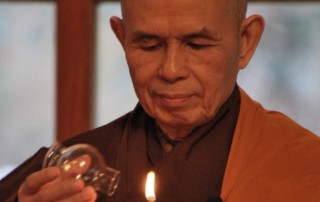From the Maslanka Archive – No. 38, The Life & Influence of Thich Nhat Hanh
From the Maslanka Archive features media and stories of David's life and work. This week, we are excited to feature the podcast Wind & Rhythm and their new episode on David's music inspired by the late Buddhist Monk, Thich Nhat Hanh.


 This is the primary building block of the section starting at m. 108.
This is the primary building block of the section starting at m. 108.